Introduction #
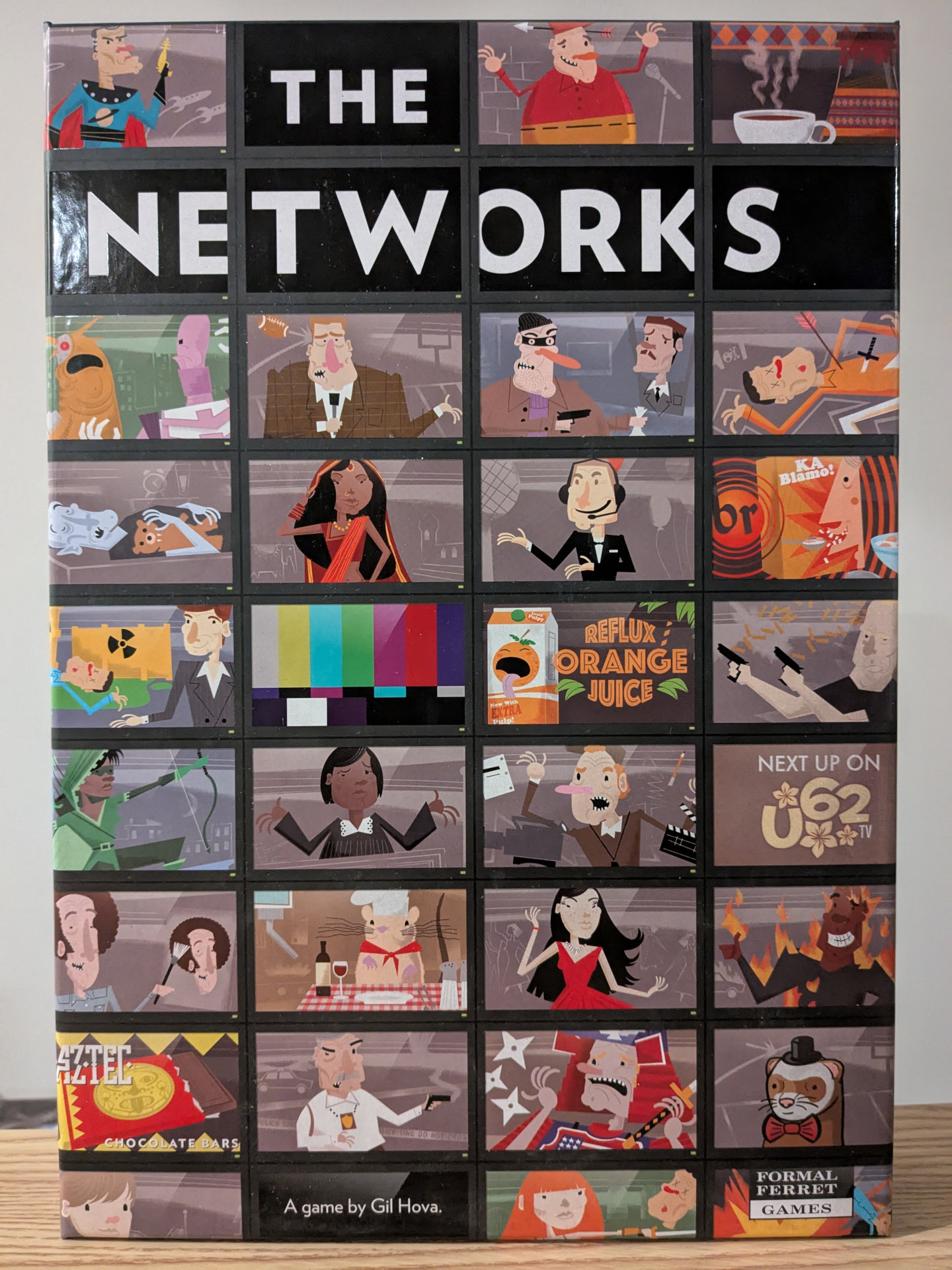
Ever dreamed of running your own TV network? As someone who grew up binge-watching everything from sitcoms to crime dramas, the theme of Gil Hova’s The Networks immediately caught my attention. After several plays, I’ve found it delivers a unique twist on card drafting while capturing the cutthroat world of television programming, even if it doesn’t quite reach “must-see TV” status.
Overview #
The Networks puts you in charge of a fledgling television network trying to build its viewership through smart programming choices. Each turn, you’ll draft shows, stars, and ads from a central “market” to develop your prime-time lineup. Shows have specific requirements of stars and advertisements in order to develop the show, creating an interesting puzzle of resource management and timing. Additionally, you’ll find Network cards up for grabs in the central market that offer powerful abilities like other ways to score or ways to pull off clever combos.
Your goal is to accumulate the most viewers over five seasons. Each season, you’ll develop new shows while managing your existing lineup–deciding when to keep aging shows running and when to pull the plug. Shows typically peak in their second season before declining in viewership, forcing you to constantly refresh your programming schedule. It’s a clever mechanical representation of how real TV networks must continually innovate to maintain ratings.
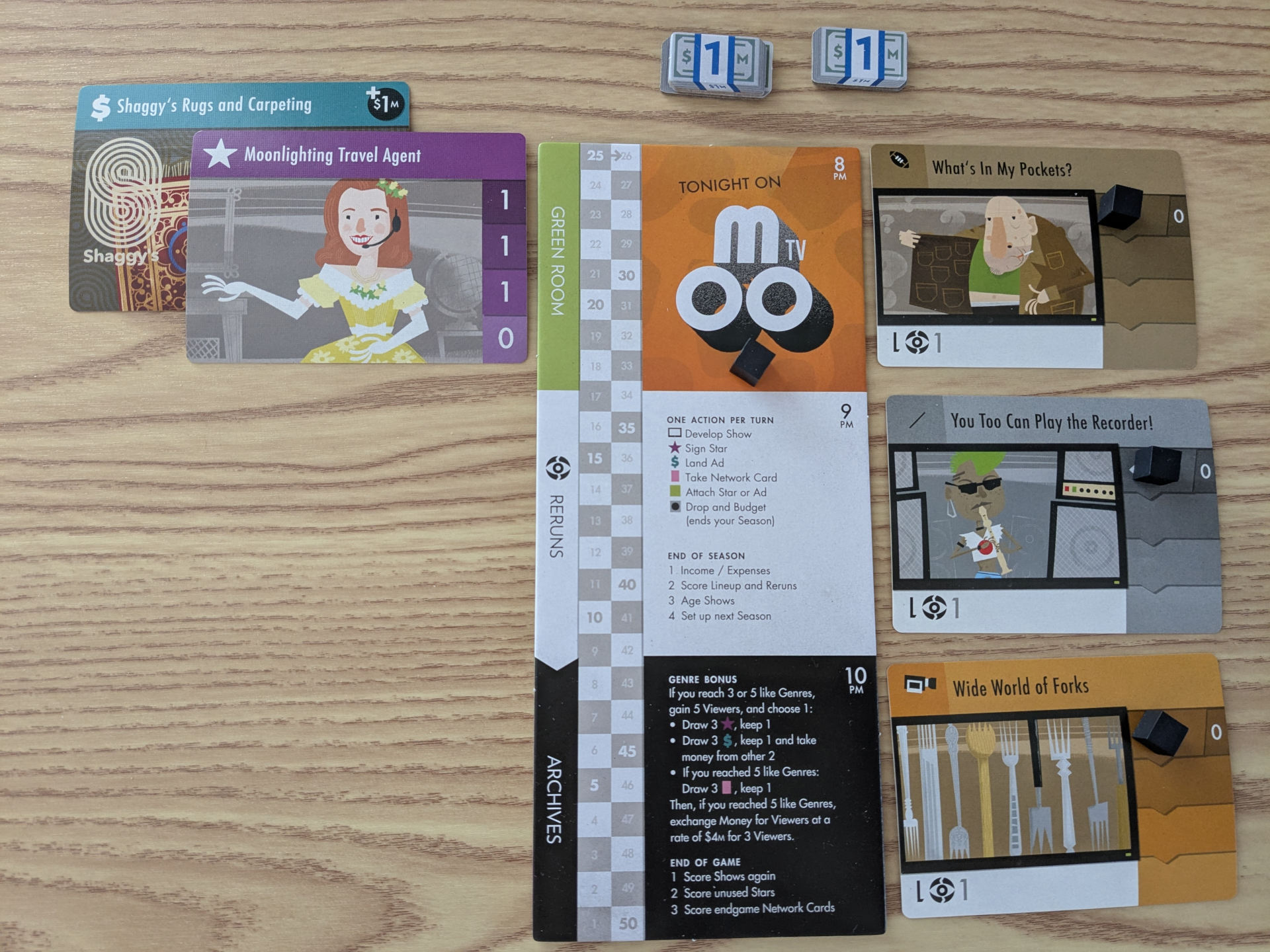
Gameplay #
The Networks excels in creating snappy, engaging turns of card drafting that keep the game moving at a brisk pace. Each action feels meaningful as you weigh various opportunities: Do you grab that promising new show? Secure a star before your opponent? Or maybe take that lucrative advertising deal?
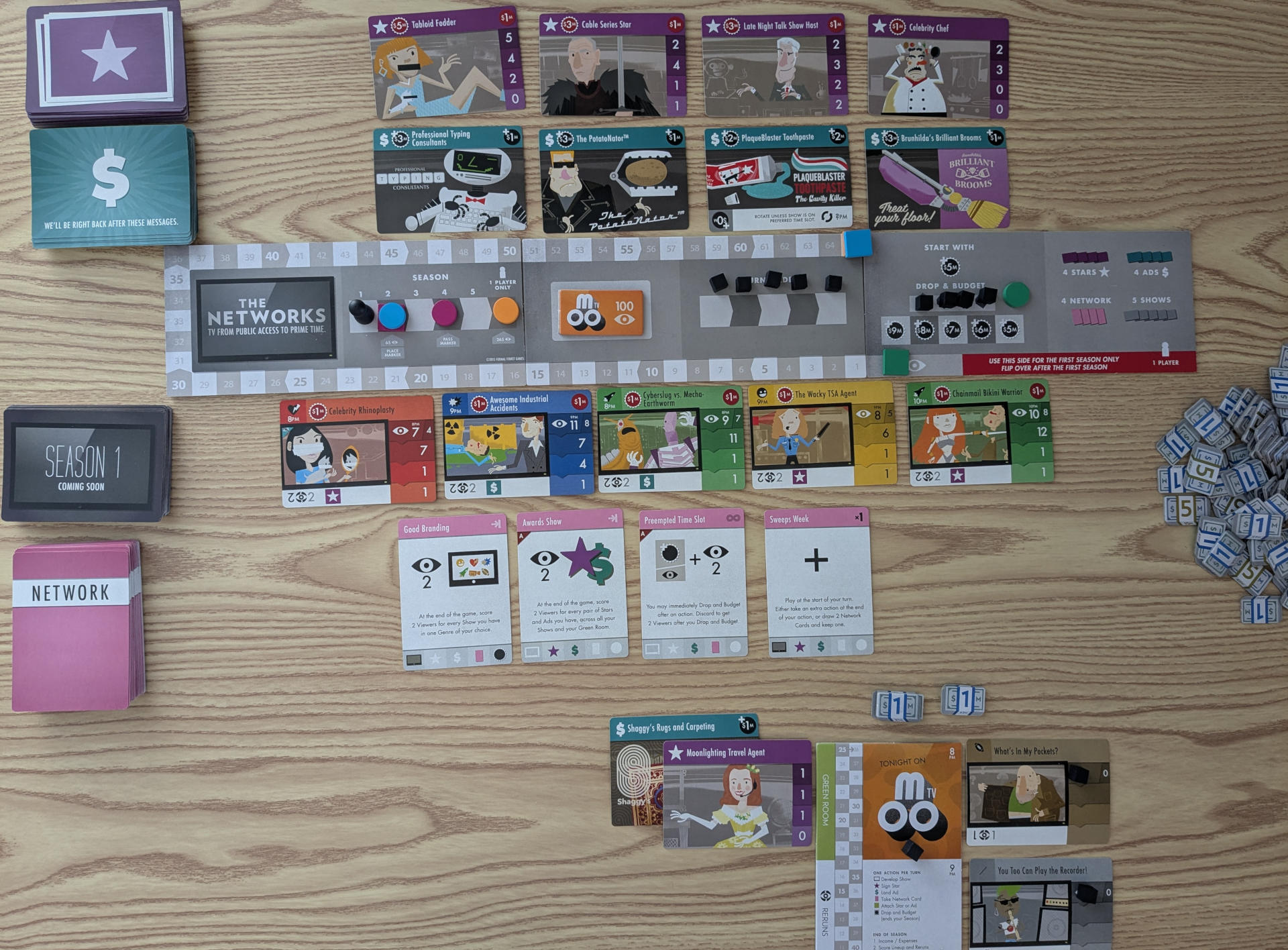
The game offers some interesting wrinkles through its card variety. Some ads and stars require specific conditions to maximize their benefits which adds welcome variety and decision-making depth. Network cards can provide unique advantages, though I found their long-term rewards weren’t quite impactful enough to build a strategy around them.
However, the gameplay reveals some interesting quirks the more you play. While the turn-to-turn decisions are engaging, I found the game offers very little for long-term strategies. Shows typically run their course within a couple of seasons, meaning you’re constantly in reaction mode rather than building toward a grand plan. Most of my tactical decisions revolved around ensuring I had the necessary resources for my next show rather than crafting an overarching strategy.
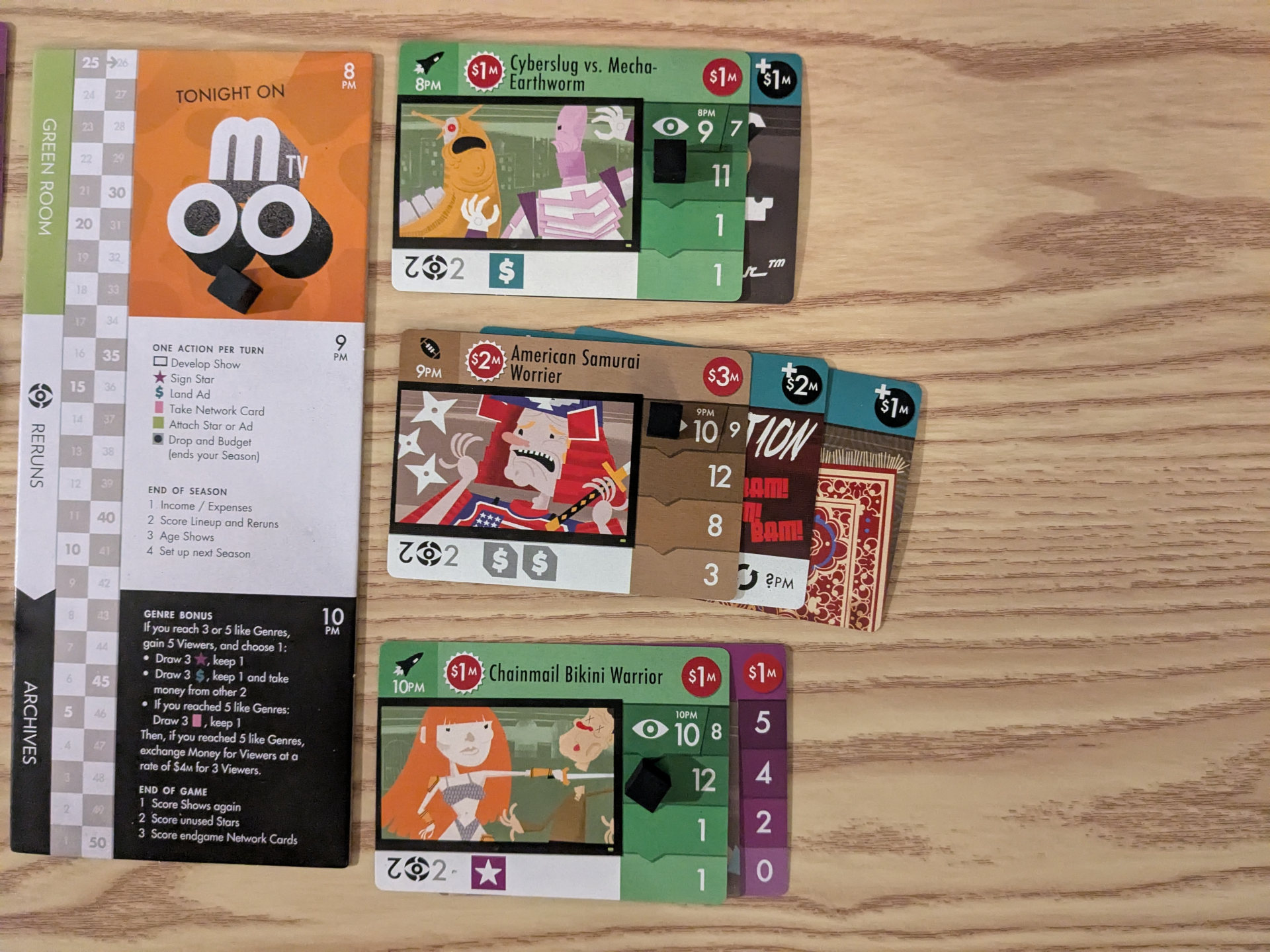
All of this makes building a television network empire underwhelming. You’re not building an engine. You score more viewers in later seasons largely because the shows (i.e. cards available) are better. If you stop cycling your shows, your network is dead in the water. This perhaps makes for a more realistic simulation, but not particularly satisfying to play. On the other hand, on the topic of simulation, re-runs and the benefits you receive from them end after one season. Even a beloved show fades into the void after its final season. Concepts like syndication and merchandising that could really help transform a television network and build an engine (with more strategic depth) are absent from this simulation.
Solo Play #
The solo mode in The Networks deserves credit for its clever implementation. Rather than using a complex automa, the Network cards are dual-purpose and are used to simulate opposition by discarding or “burning” cards from the market each turn.
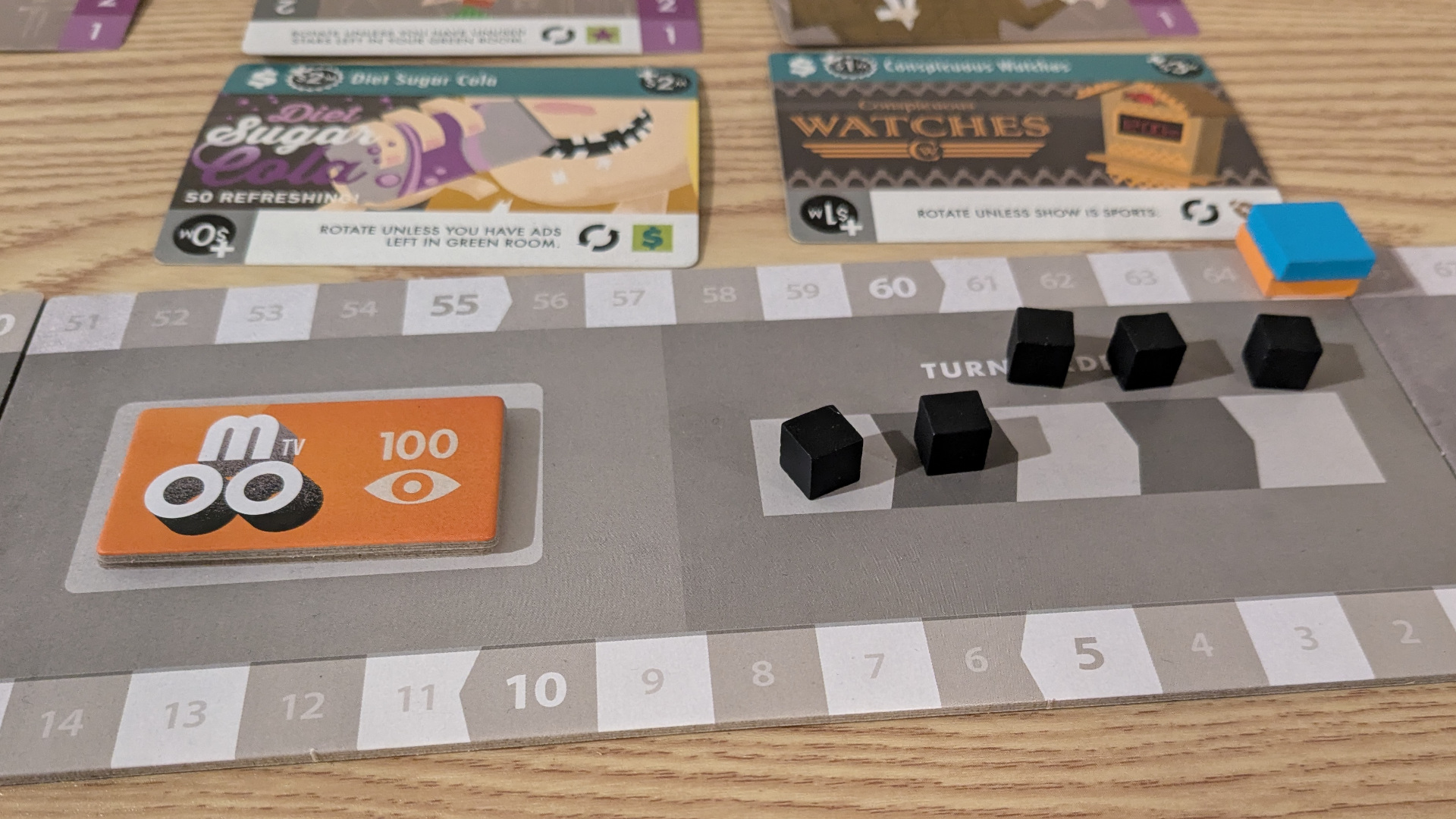
An added twist that is unique to the solo mode is that if you are ever required to burn a card type and there are no more of that type present in the market, you receive a “strike” against you. This creates an elegant push-your-luck element unique to solo play–stay in a season too long, and you risk accumulating strikes when cards need to be burned but none remain available. Five strikes results in an instant loss. The tension of managing strikes while maximizing your score to reach the 265 viewers threshold to win captures the feeling of a network taking calculated risks to succeed. While the core gameplay remains somewhat dull, these solo-specific mechanics add an engaging layer of decision-making.
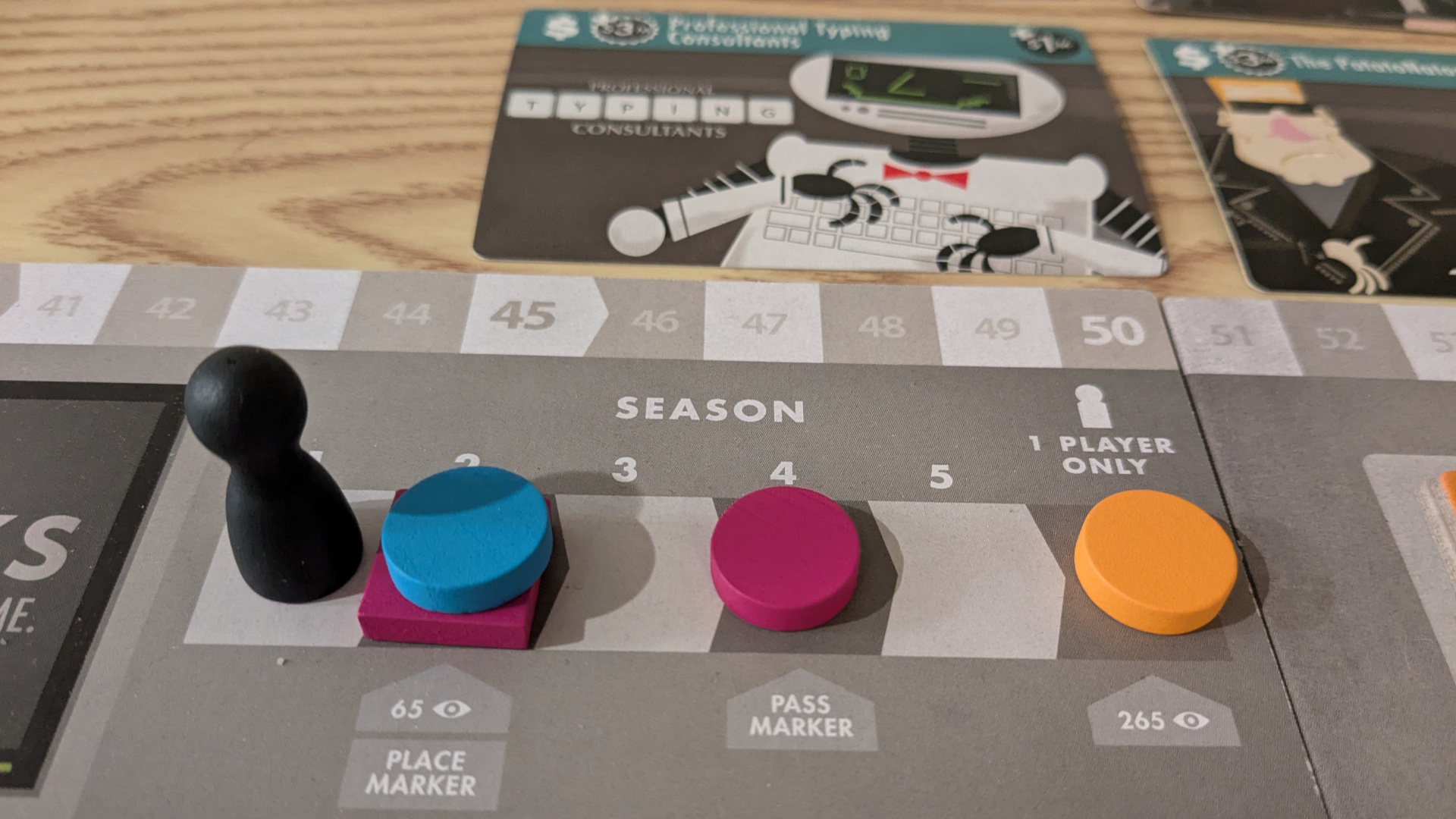
Once you’ve figured out the puzzle for scoring 265+ viewers, there isn’t much left to do than beat-your-own-score (BYOS). I could see some obvious levers to pull to increase difficulty, but the game doesn’t offer additional levels of difficulty out of the box.
Components and Design #
The Networks shines in its presentation of theme. The artwork strikes a perfect balance of cute and zany, while the show names and descriptions are packed with clever puns that any TV fan will appreciate. I found myself chuckling at parodies like “Babylonian Idol” and “How I Left Your Father.”
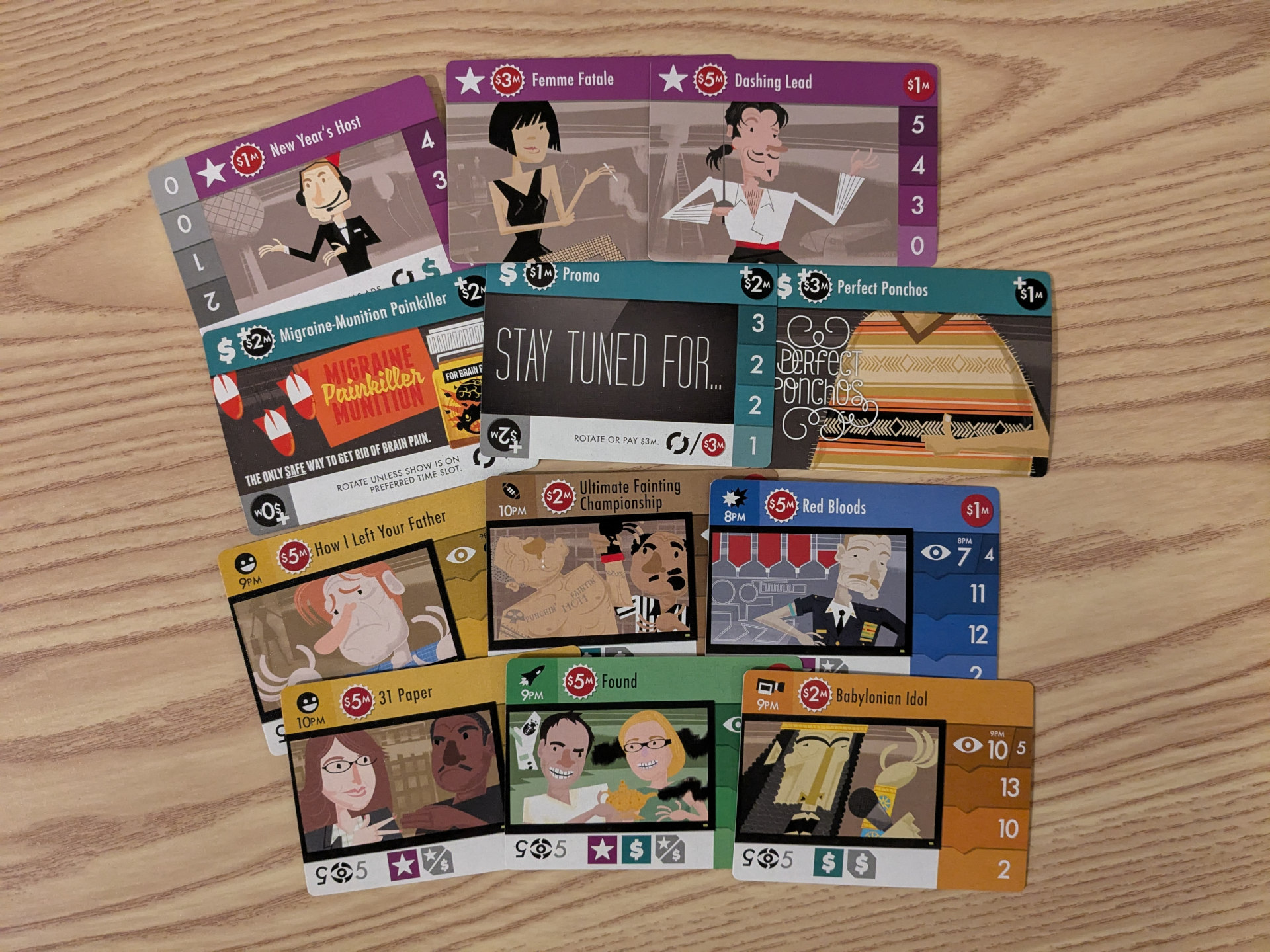
The Network cards feature abilities that cleverly tie into their thematic identity. Also, the way shows can unexpectedly boom or bust in popularity feels true to the unpredictable nature of television ratings.
In terms of components, there are a large number of star, ad, and show cards giving players a lot of visual variety. The cards effectively support the gameplay while maintaining the game’s lighthearted tone. The player boards work very well for keeping the player areas organized and game flow and rule reminders front and center. I’m also particularly attached to the wads of money. These heavy cardboard tokens feel nice to handle. The thick cardboard combined with the 2.5D artwork really give the wads of money some extra dimensionality.
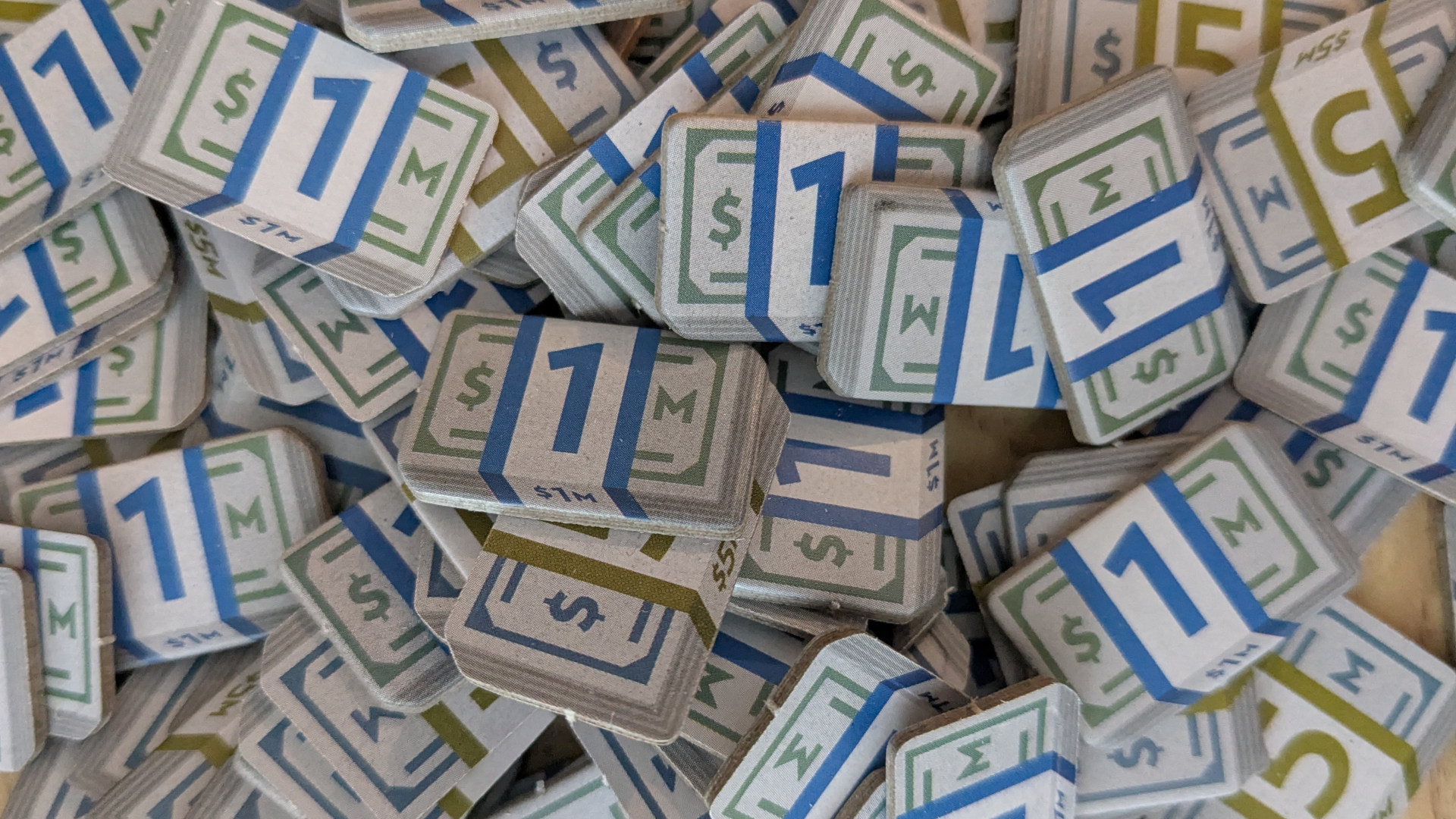
Final Thoughts #
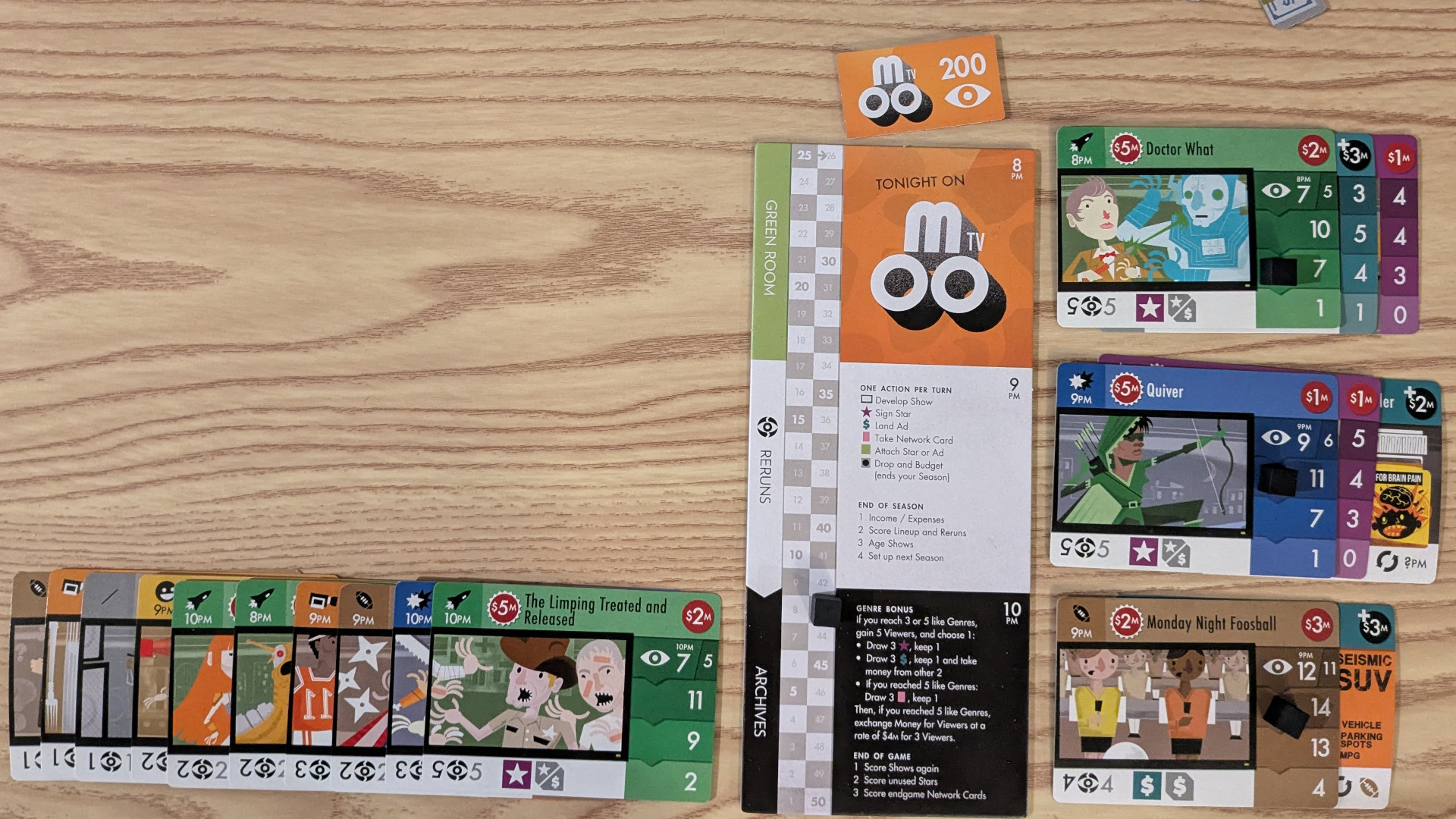
While The Networks may not quite achieve “hit” status, it draws attention and deserves credit for innovating with a theme that is still largely unexplored. It can offer an entertaining experience that especially appeals to TV buffs. While it might be worth keeping in a collection because of the novelty of its theme and the giggles to be had as a group, I don’t think it has much staying power or replayability for solo board gamers.
We purchased this product independently. All opinions expressed are independent, honest, and unbiased.
- The Networks captures the cutthroat world of television programming with clever puns, thematic artwork, and a unique premise.
- Quick turns with meaningful card drafting decisions keep the game flowing smoothly.
- The push-your-luck mechanics and strike system in solo play add a layer of tension and decision-making.
- Visually appealing artwork, organized player boards, and tactile components like thick cardboard money enhance the overall experience.
- The constant need to react to short-term decisions overshadows opportunities for long-term planning or engine-building.
- The lack of permanence of TV shows reduces the feeling of building a true network empire and creates an underwhelming gameplay arc.
- After solving the puzzle for hitting the scoring threshold to win, the solo mode offers little incentive to revisit beyond beating your own score.
Learn more about how we rate board games...
